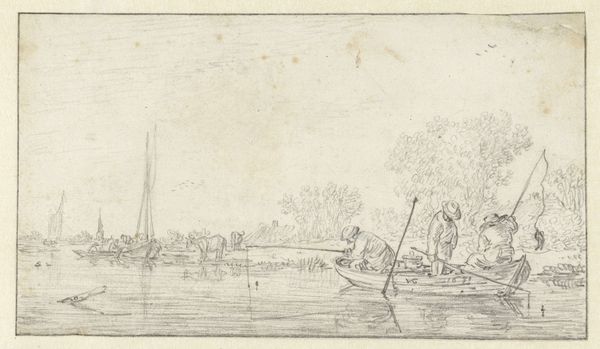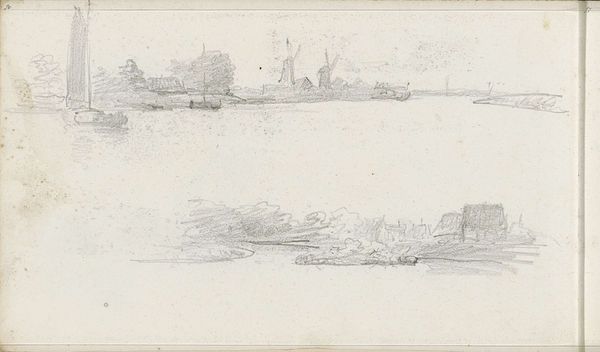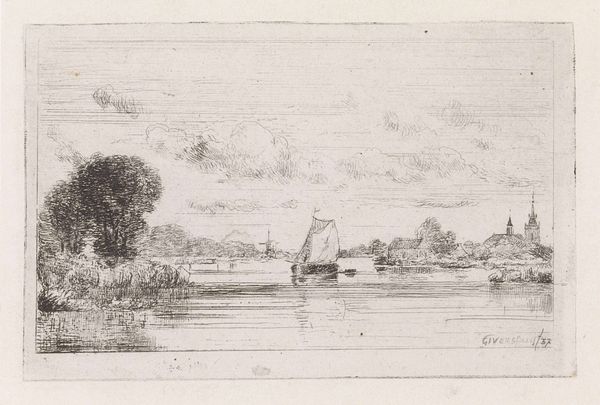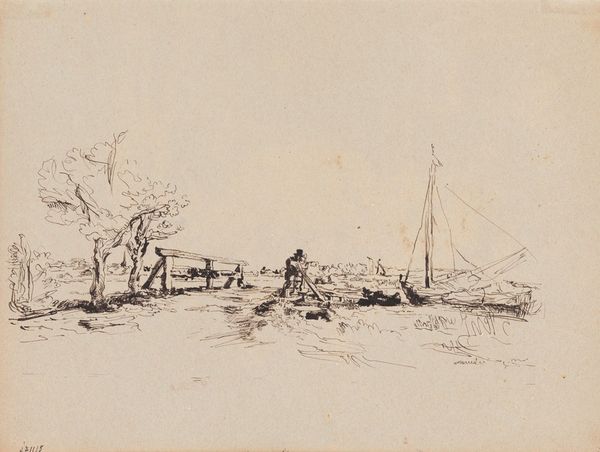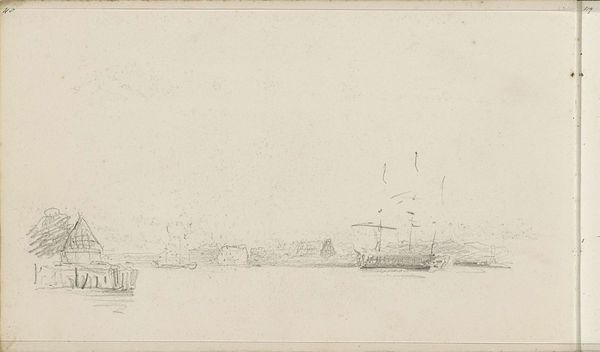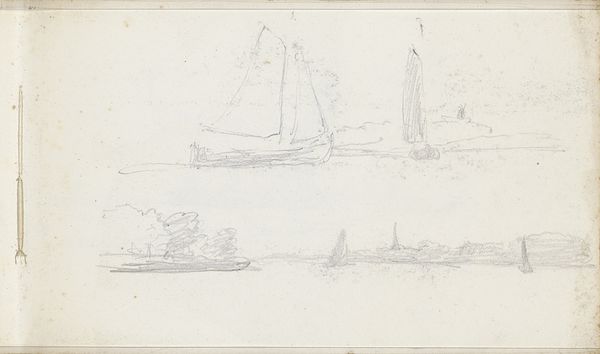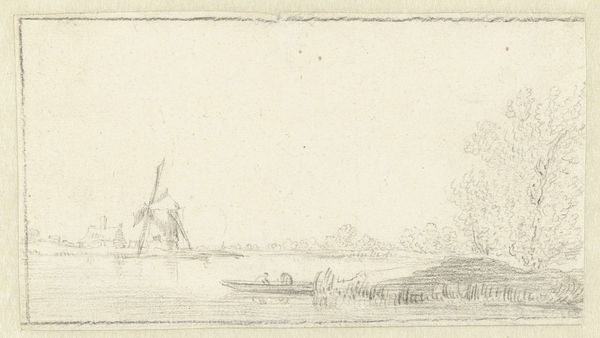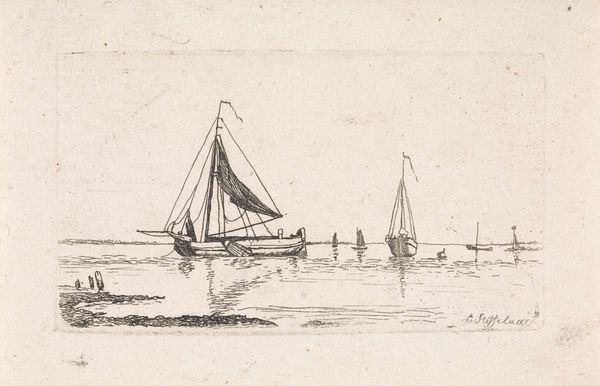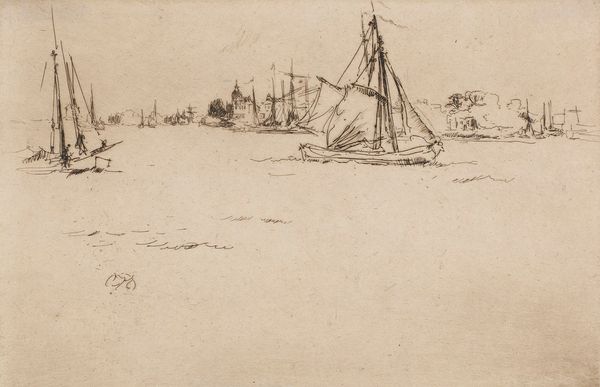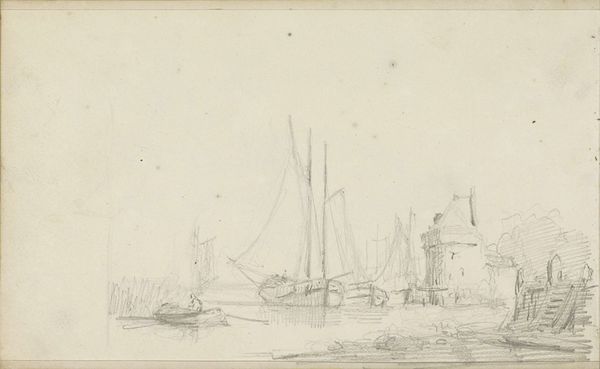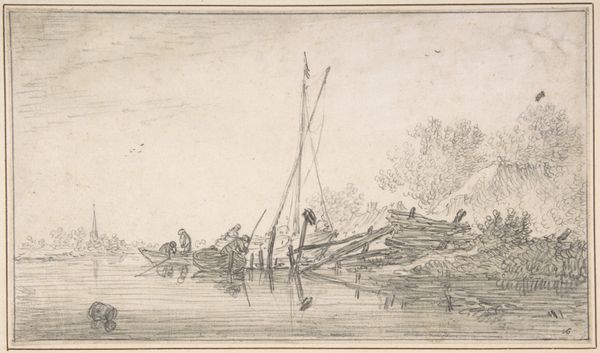
drawing, pencil
#
drawing
#
amateur sketch
#
aged paper
#
light pencil work
#
quirky sketch
#
dutch-golden-age
#
pencil sketch
#
incomplete sketchy
#
landscape
#
river
#
personal sketchbook
#
sketchwork
#
pencil
#
sketchbook drawing
#
realism
#
initial sketch
Copyright: Rijks Museum: Open Domain
Curator: Here we have a drawing titled "Riviergezichten met zeilschepen," or "River Views with Sailing Ships," by Petrus Johannes Schotel, created sometime between 1841 and 1865. It's a pencil sketch currently held at the Rijksmuseum. Editor: My first impression is of a quiet day. There's a certain stillness captured in the light pencil work that makes me feel calm, almost nostalgic. It feels intimate, like a peek into the artist's personal sketchbook. Curator: Precisely! Schotel, as a marine painter, was deeply influenced by the 17th-century Dutch Masters. But it’s essential to note how socio-political contexts affected patronage and the shift in subject matter— moving from grand naval scenes towards simpler, more domestic views reflects the changing power dynamics. Editor: And what does this "simpler, more domestic view" mean for those traditionally excluded from art history's grand narratives? It suggests a personal gaze, perhaps less filtered through the lens of patriarchal authority and more attuned to quotidian beauty. What voices are represented here, even indirectly? Curator: A valid point. While the drawing might appear straightforward, thinking intersectionally reveals the potential absence of the working class—who relied heavily on these waterways. We have to also question whose perspective we are really viewing here, considering socio-economic biases. Editor: The sketchwork itself is interesting, too. The artist doesn’t appear to be after photo-realism but capturing the essence, almost as memory of that scenery, and perhaps idealising it in their mind? Are we seeing real events on the River or projections by a white-male gaze from the 19th century? Curator: Absolutely, and let’s look closely at the sails. Their prominence speaks not just to an interest in maritime activity but could, within a broader context of global trade and colonialism, allude to exploitation and inequality. Editor: Yes, even what looks like a serene drawing carries such weight! I am now seeing it as part of a larger story about representation, power, and how historical perspectives constantly evolve when more inclusive views enter into dialogue with those established by history. Curator: I agree. By considering this sketch within the frame of maritime history and cultural representations, we hopefully highlight layers beyond the visual and engage more consciously with our colonial past.
Comments
No comments
Be the first to comment and join the conversation on the ultimate creative platform.
